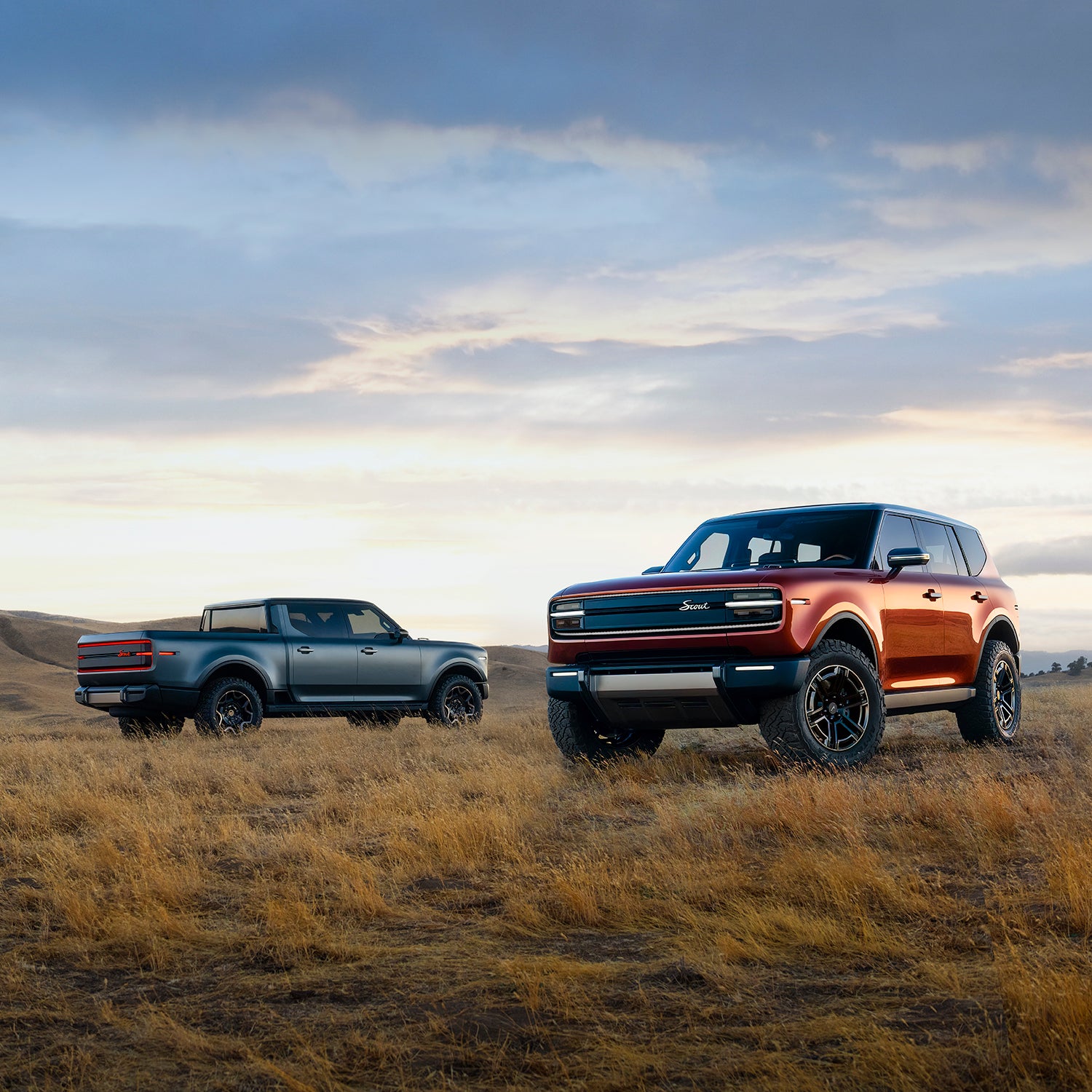On October 24, Scout Motors unveiled near-production versions of its electric Traveler SUV and Terra pickup truck. The Volkswagen subsidiary plans to begin producing the vehicles in South Carolina in 2027. With prices for the body-on-frame trucks starting as low as $50,000 (with tax incentives), and featuring an optional range-extending gasoline generator, the revived brand is addressing major barriers that have stood in the way of American buyers’ desires for EV trucks.
The deeper you dive into the spec sheets, the more appealing these trucks get. Features like body-on-frame construction, a solid rear axle, mechanical locking differentials in both the front and rear, and optional 35-inch tires will boost off-road capability and durability. An optional front bench seat and a full-length retracting roof will recreate a sense of classic truck nostalgia without sacrificing practicality for daily driving.
Everything drivers have come to love about other electric trucks will be present in Scout’s new vehicles, too. With 1,000 pound-feet of torque, zero to 60 miles per hour times will happen in as few as 3.5 seconds. They’ll sport futuristic lighting elements reminiscent of old neon signs, and a minimalist interior is dominated by a large touch-screen infotainment system.
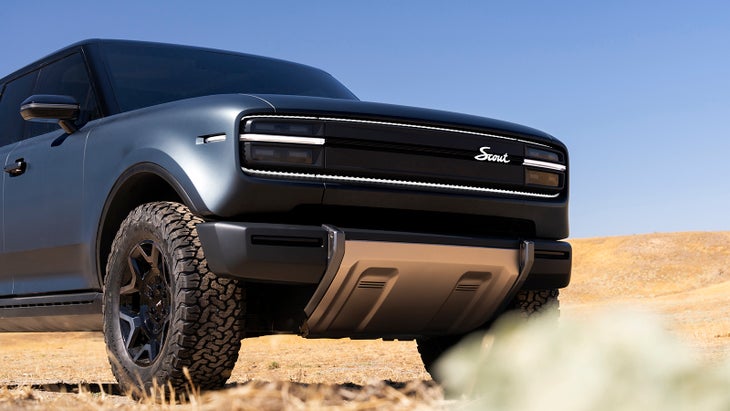
What Is Scout Motors?
International Harvester, an American brand better known for its tractors, began making the original Scout in 1961. Intended to rival post-war Jeeps by pairing equivalent capability with extra refinement, the International Scout became an icon due to its smooth, compound body surfaces. International Harvester sunsetted passenger vehicle production in 1980 after the American auto industry suffered numerous setbacks and increasing competition from foreign automakers across the seventies.
Volkswagen purchased rights to the Scout brand in 2020 and established Scout Motors in 2022 with the goal of developing electric trucks specifically designed for American drivers. While still owned by VW, Scout operates as an independent company and has its own U.S.-based executive staff.
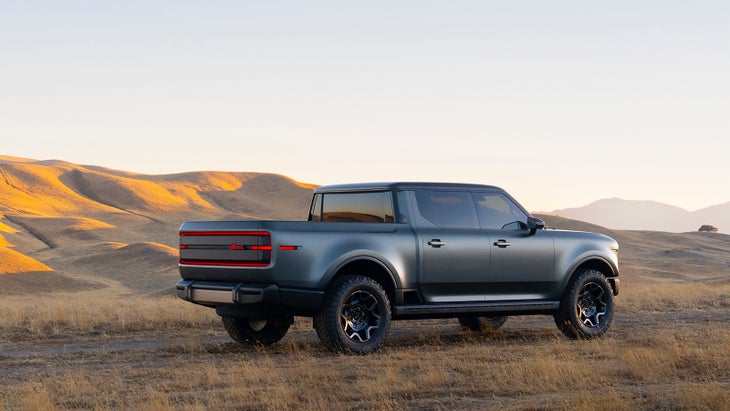
The Traveler and Terra were designed in Novi, Michigan, by Scout’s own R&D team, and will be produced at the brand’s new $2 billion factory in Blythewood, South Carolina. Scout says that factory will employ up to 4,000 American workers.
Scout plans to sell its vehicles directly to consumers and has plans to open a nationwide network of dedicated showroom and service locations to support that endeavor. The company says the sales process should be should be streamlined, promising “full price transparency,” and that, “transactions will be completed in minutes.”
While Scout Motors operates independently from VW, the backing of the world’s second-largest automaker remains a significant asset. Production targets are said to be as high as 200,000 vehicles per year.
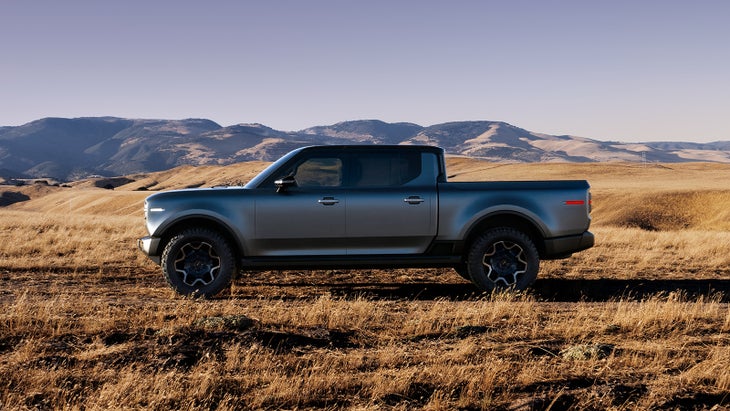
Scout Nails the Truck Stuff
Building the Traveler and Terra using a body-on-frame design should result in higher payload and towing capacities, increase durability, and foster repairability in comparison to the unibody construction more typical in the EV space. It may also open up easier paths to modification, something Scout is teasing by stating that “robust suspension options” will be available.
The ability to easily increase suspension height, fit larger tires, adjust spring rates, and improve damping capabilities will let buyers modify their Scout to their heart’s content. This will enable the vehicles to be adapted to different use cases and allow owners plenty of opportunity to personalize their vehicles.
The Scout Terra features a squared-off cab and horizontal bed rails that will make it easy to develop compatible bed caps and campers. Accessory makers will rejoice.
The choice to employ a solid rear axle will help there, too. Using one means the rear wheels will remain parallel, no matter what height the rear suspension sits at. Since loads change mostly in the vehicle’s cargo area, this also facilitates strong payload and towing capacities, will make lifting the vehicle easy, and enhances articulation over off-road obstacles.
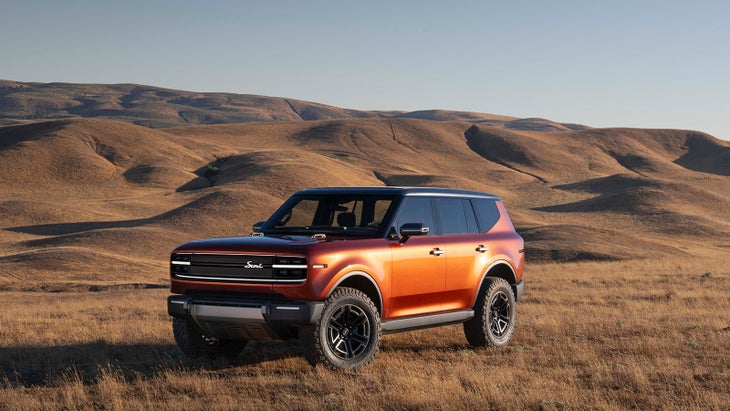
And, of course, there’s the motor configuration and locking axle differentials. The Scout SUV and pickup will feature two instead of three or four motors. Moving the motors out of the wheels and reducing their number will reduce complication and parts counts (the more parts on a vehicle, the more stuff that can fail), and simplify how the Scouts handle off-road traction. The Scouts will be able to lock their mechanical diffs just like a gas-powered 4×4.
Given that these vehicles are still at least three years away, Scout is quoting specs as ranges or targets rather than definitive numbers. Payload figures are said to be “nearly 2,000 pounds” on both vehicles, while towing capacities are “over 7,000 pounds” for the Traveler and “more than 10,000 pounds” for the Terra. Those numbers are excellent when compared to similar-sized popular SUVs and pickups on the market.
It appears as if 33-inch tires may be standard, with 35-inch items available as an option. The Traveler SUV can carry a full-size 35-inch spare on its external carrier. The Terra pickup will normally carry a 33-inch spare under its bed, but needs to move a fifth 35-inch inside the bed. Expect hitch-mounted spare tire carriers like those made by to be a popular accessory.
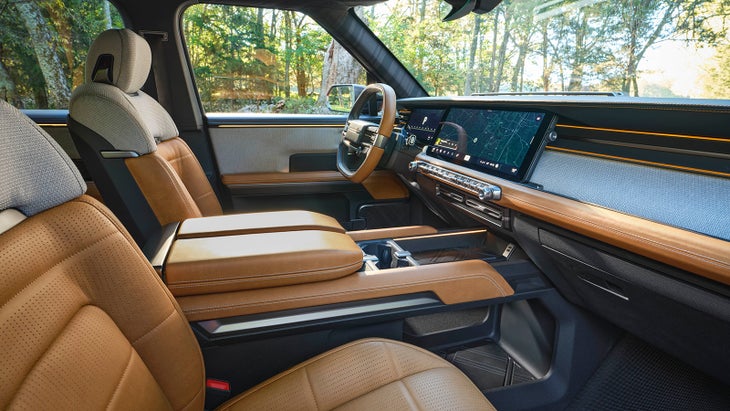
Scout Combines Retro and Futuristic Styling
While the Terra and Traveler will carry all the amenities one might expect in a luxury EV, many customers will be relieved to find Scout is still taking an analog approach to its interiors. Scout says the vehicle will “largely be controlled through a tactile experience.”
“From mechanical door handles, to grab bars, to switches and dials, Scout vehicles will provide a real hands-on user experience,” the company states.
And while individual bucket seats will remain standard, a front bench will be optional on both the Traveler and Terra. This will increase total seating capacity from five to six, and allow a couple (or throuple) to nuzzle up to each other in the cab.
Roof options strike a similar balance between practicality and enjoyment. A normal fixed roof is standard, but both a full-length sunroof and retracting fabric “Cabana Top” will be available as options. Because both operate within the same solid structure of the normal roof gutters, neither will impair the fitment of roof racks, rooftop tents, or other popular accessories. Cabana Top should be able to function without squeaks, rattles, leaks, or wind noise, again because it’s mounted within the permanent roof’s structure.
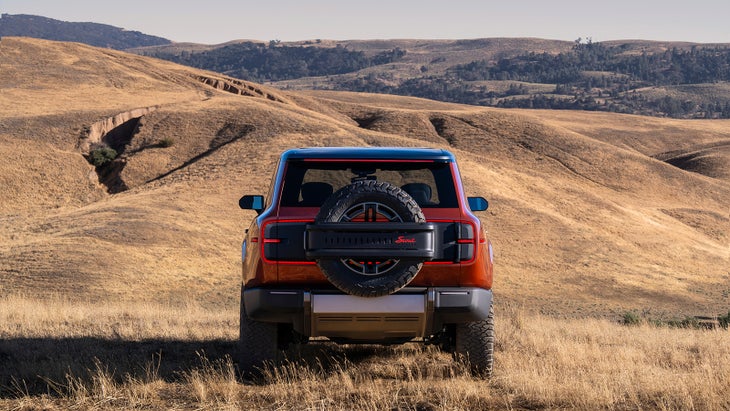
Electric Power, with Optional Gas Range
Scout says that basic versions of the Traveler and Terra will be normal battery-only electric vehicles. Range on those is said to be “up to 350 miles,” which may indicate the presence of different battery pack sizes available at different price points.
The Scouts will use the North American Charging Standard, an 800-volt architecture, and are capable of charging up to 350 kilowatts. They’ll be able to use the Tesla Supercharger network in addition to others.
And while the pure-battery versions of the Scouts will work well for most normal driving duties, those of us who live and travel in and through remote areas—or spend a lot of time driving off-road—will be thrilled by the presence of a gasoline-powered range-extending generator. Scout is mum on details of that engine’s capacity, power output, location, and configuration, but does say that the generator will only operate to charge the battery, not drive the wheels.
Stellantis provided many more details of its own unique Extended Range Electric Vehicle (EREV) system when it announced its new Ramcharger electric pickup truck last year. And while some mechanical details may differ, the system’s benefits should remain largely identical.
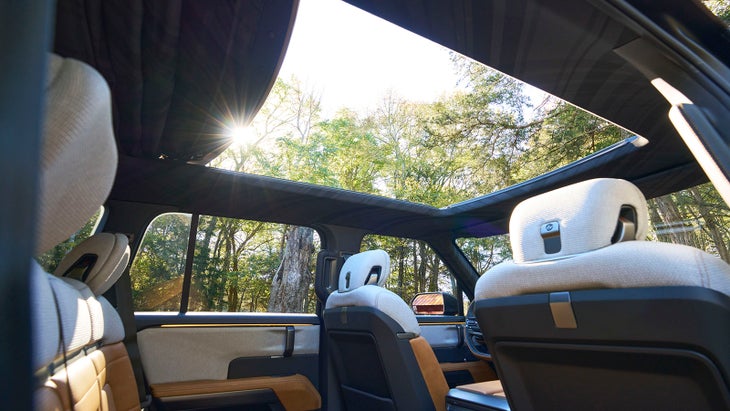
Modern electric vehicles are fast, smooth, responsive, and quiet to drive. The downside of electric vehicles is our charging infrastructure. Even large cities struggle to offer enough charging capacity for growing fleets of EVs. Venture into a rural area and chargers may not be available at all. This can limit an EV’s ability to serve all vehicle roles within a household and make long-distance travel away from major interstates impractical.
Adding a gasoline-powered generator to an electric vehicle delivers the best of both worlds. You still get all the superlatives of electric motivation, but gain the ability to charge your batteries as you drive. And you can add more range at both gas stations and EV chargers. Until those chargers become as widespread and commonplace as gas stations, EREVs represent a practical solution that should ease EV adoption. Their only downsides are that they do cost more money, add some weight, take up space, and increase parts counts.
On the subject of pricing, Scout says the Traveler SUV should start at “under $60,000,” but that they anticipate available tax incentives can bring the cost as low as $50,000. The Terra pickup will start $1,500 higher. There’s no word on how high options (like that range extender) could take prices. The company began to take $100 deposits on Thursday night.
With a familiar-but-futuristic design, welcome doses of functional nostalgia, what should be class-leading off-road capability, potential for modification, and the ability to extend range to anywhere you can find a gas station, as well as the financial backing of Volkswagen, Scout is launching with a winning formula. Heck, these things are compelling enough that I’m about to click over to their website and hand over a hundred bucks for the privilege of being able to purchase one three years from now. The idea of cruising dirt roads here in Montana in near silence, with my arm around my wife or one of our dogs, is the exact experience this outdoors enthusiast can get excited about.


